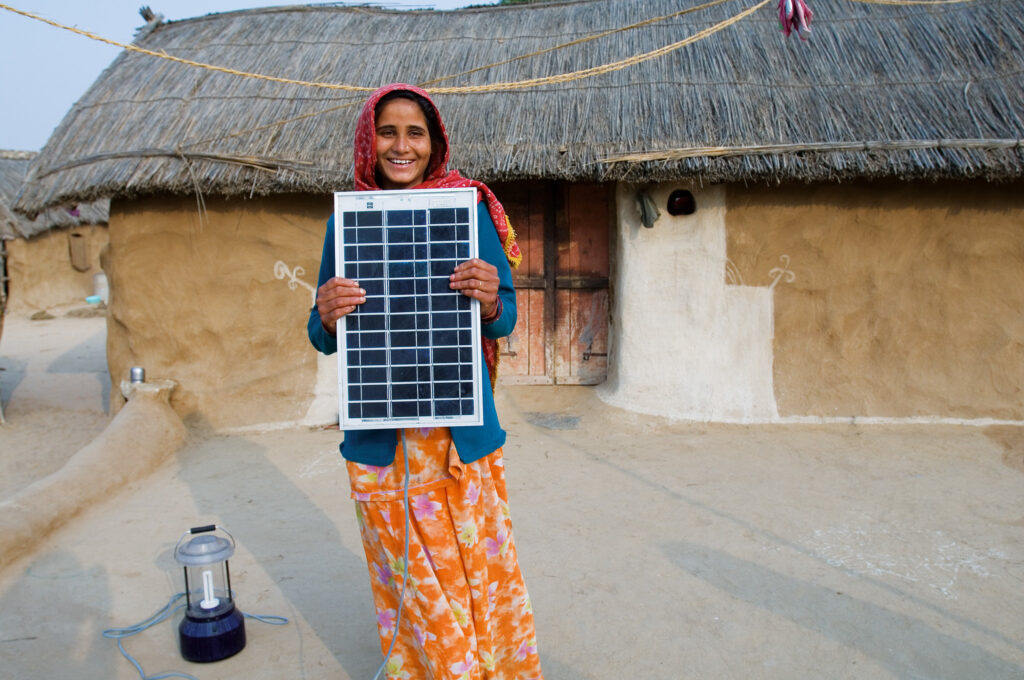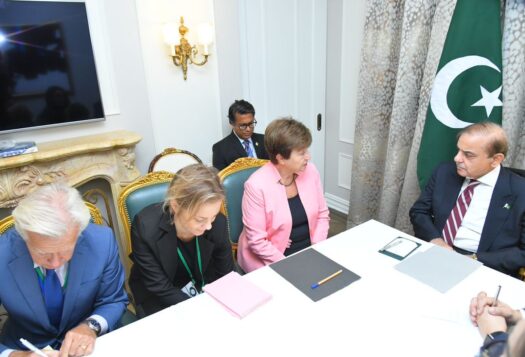
India finds itself facing relentless natural calamities as a result of environmental change, set against a backdrop of a governance system that is woefully unprepared for the escalating crisis. The country is frequently battered by floods, droughts, landslides, and heatwaves, which put pressure on already stressed infrastructure and manifest into near-daily news headlines on leaking parliaments, crumbling airports, and collapsing bridges. A report by the World Meteorological Organization highlighted that over 130,000 lives were lost in India due to disasters associated with extreme weather over the past 50 years. These numbers are not mere cautionary tales but signs of a broader existential threat, making immediate and decisive action not just preferable but essential.
To be sure, India is working to address this challenge by actively working towards achieving its ambitious Nationally Determined Contributions (NDC) under the 2015 Paris Agreement, including the goal to reach net-zero carbon emissions by 2070. Notably, New Delhi has established a robust policy framework to guide action through the National Action Plan on Climate Change (NAPCC). According to a 2022 NITI Aayog report, 26 percent of the 104 centrally sponsored schemes, covering ten sectors, incorporate a climate change and/or sustainability component into their design. However, despite such initiatives, India’s environmental governance frameworks still remain increasingly overwhelmed by bureaucratic, financial, and regulatory challenges, signaling not just a need for policy reform but also for a complete reconfiguration of governance to properly address looming existential threats.
Challenges to India’s Climate Governance Approach
India’s approach to climate change is fraught with substantial challenges that undermine the efficacy of its policies and governance mechanisms. Despite India’s commendable tenth-place ranking on the Global Climate Change Performance Index (CCPI), its actual performance in critical domains such as policy formulation and reducing dependence on fossil fuels such as coal remains suboptimal.
India’s environmental governance frameworks still remain increasingly overwhelmed by bureaucratic, financial, and regulatory challenges, signaling not just a need for policy reform but also for a complete reconfiguration of governance to properly address looming existential threats
The first challenge is bureaucratic, with environmental governance being highly centralized, and the federal government enjoying fiscal, bureaucratic, and jurisdictional powers over state and local institutions responsible for policy implementation at the ground level. Paradoxically, these states are also responsible for critical domains like electricity, health, agriculture, and water, which bear an important role in climate action. This asymmetry in power and resources creates governance gaps, where states are expected to implement climate policies but lack the necessary financial and administrative capacity to do so. Additionally, the political salience of environmental issues remains low, with national and state election campaigns rarely prioritizing them. Climate consciousness is still sparse among the masses in India, demanding a renewed political focus on the issue.
Finance is another key challenge. As per the Reserve Bank of India, as of 2023, India’s green financing requirement is estimated to be at least 2.5 percent of annual GDP till 2030. Despite progress in the last two budgets with policies like the National Critical Minerals Mission, and a new climate finance taxonomy, the 2025-26 Budget allocation to the Ministry of Environment, Forest, and Climate Change (MoEFCC) reflected only a marginal increase from the previous year. While the Ministry of Renewable Energy witnessed a 53 percent increase, the coal sector experienced a significant surge of 160 percent, while the petroleum and natural gas sector received a 21 percent hike in funding. Moreover, India still lacks a comprehensive renewable energy law. At present, the country relies on sectoral legal provisions under existing laws such as the Electricity Act (2003) and the Energy Conservation Act (2001).
A third challenge is regulatory. For instance, the Environmental Impact Assessment (EIA), a tool used globally to assess the environmental effects of development projects, is dysfunctional both in principle and in practice in India. The current EIA framework operates on an exclusion and threshold model, wherein during project screening, certain projects are either excluded from assessment based on predefined criteria or only require an assessment if they exceed specific thresholds (e.g., project size), thus focusing only on large-scale developmental projects. It lacks rigor, primarily due to significant instances of corruption and collusion between private actors and government entities. Approvals from the MoEFCC are often granted with relative ease, even for projects that pose severe environmental risks such as the Great Nicobar Island Development Project. Besides harming the environment, such projects that have received approval also affect the livelihood of people and increase their exposure to future climate risks.

Recommendations for Reform
To address these issues, India requires a rethinking of its environmental policy and governance frameworks—a shift that can be achieved on four critical fronts. Firstly, empowering local governance structures is essential for effective climate action. A study conducted on a municipal intermediary network to achieve carbon neutrality in Finland demonstrates how such networks can effectively promote local action and support communities in addressing environmental effects. A similar model could be implemented at the village level in India, to form action networks tailored to local needs with the support of district, state, and regional committees to ensure coordinated efforts. Additionally, these networks would be able to develop and implement locally-specific adaptation strategies and serve as a link to collect and collate data for more precise and tailored policymaking.
Secondly, it is imperative to expand the scope of the EIA to adopt an ecological carrying capacity model, which bases any developmental change on the natural limits dictated by available local resources like food, space, and shelter. This approach should extend to environmental zoning for all types of constructions, including homes, schools, and local infrastructure, to ensure ecological sustainability. The European Union’s EIA Directive offers a valuable model for Indian policymakers, mandating comprehensive environmental assessments for a vast array of public and private projects. Thirdly, policies need to be reoriented to ensure sustainable climate finance. Every future budget should have a strong environmental focus with more funds allocated to adaptation and loss & damage measures. Moving ahead, private investment, both domestic and foreign, needs to prioritize sustainability and equity.
Finally, current strategies—focused on renewable energy transitions, greening industries, and reducing mining activities—must be complemented by broader initiatives addressing environmental impacts at the individual, household, and community levels. The Lifestyle for the Environment initiative, designed to encourage sustainable practices and a circular economy, is a step in the right direction, but it needs more political and economic support. Public education and awareness campaigns about how the changing climate is aggravating lives and livelihoods is a crucial step. Fostering a climate-conscious culture can help build widespread public support for broader policies to safeguard the environment, ultimately making action a key electoral issue. This could also pressurize policymakers for a comprehensive climate law, integrating climate and wider environmental concerns more effectively into national and state agendas.
Fostering a climate-conscious culture can help build widespread public support for broader policies to safeguard the environment, ultimately making environmental action a key electoral issue.
Conclusion
The urgency for decisive environmental action in India cannot be overstated. The nation’s future depends on its ability to implement comprehensive strategies, raise public awareness, and strengthen its governance frameworks to confront the escalating threat from extreme weather events, pollution, and other detrimental human activities. The recent pledge of a mere USD $300 billion annually by developed countries at COP29 in Baku falls far short of the over USD $1 trillion demanded by developing nations. In such a scenario, India’s proactive engagement and governance leadership will be indispensable in securing a sustainable and resilient future for all its citizens.
Also read: India and Pakistan Must Collaborate to Combat Winter Smog
Views expressed are the author’s own and do not necessarily reflect the positions of South Asian Voices, the Stimson Center, or our supporters.
***
Image 1: Prami.ap90 via Wikimedia Commons
Image 2: Knut-Erike Helle via Flickr


